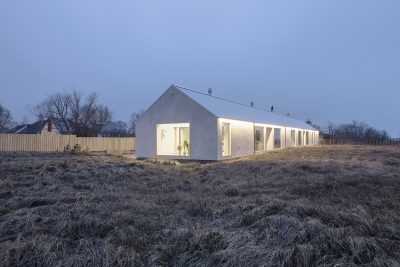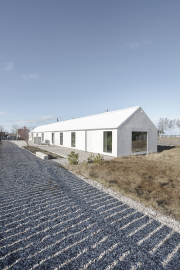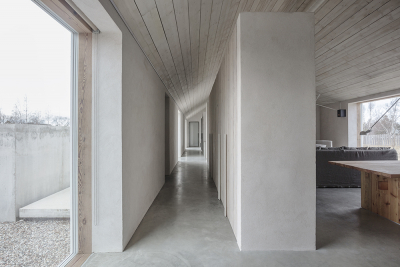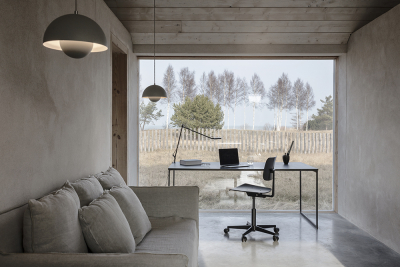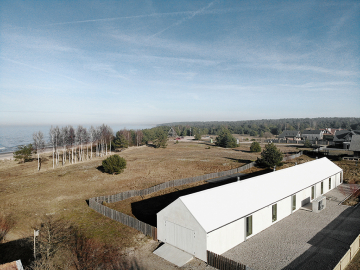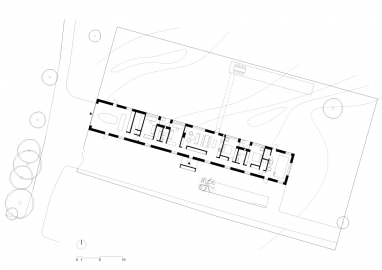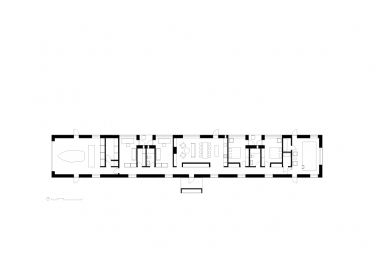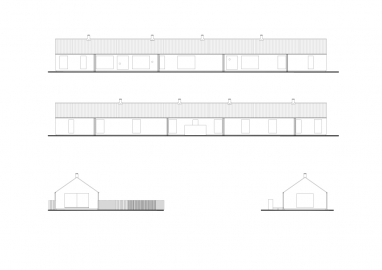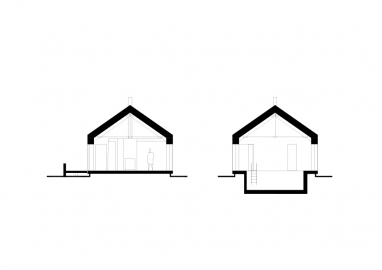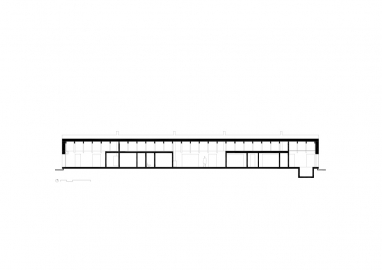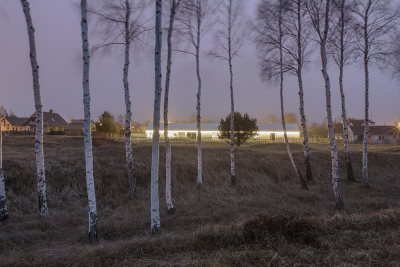Salt House
Salt House is the winner of the Latvian National Architecture Award 2019 for architecture that is truly contemporary, at the same time throughout Latvian. Rooted in tradition, built within the budget, with today’s materials, skills and sustainable technologies it widens perception how to think about personal environment in regard to the world around.
House is located on the edge of the town’s historical center where all the streets cross at perpendicular angles on a grid that abuts the sea. Pavilosta has a temperate climate and strong wind, so the building was constructed with monolithic blocks with no additional insulation necessary. The cross-section of the building was inspired by traditional fishermen's houses. Within open and closed spaces overlap, providing a semi-transparent space of both openness and intimacy.
Architect took into account tradition, climate, landscape, ecology both of materials and processes, abilities of local craftsmen and builders, contemporary technological requirements, needs, budget of the client and many more, and only then architecture that fits into the place and minds, was born. Salt house is the answer to all the considerations above, in the exact place and time - Latvia, now.
The house is located 250km from the capital city Riga, right on the seashore of a small seaside town of fishermen, water sports fans, nature lovers, and a tranquil atmosphere. Town's historical centre is filled with low gable-roof houses and has a historically unique orthogonal street plan. Each of the perpendicularly intersecting streets eventually leads to the beach, seen from afar.
240-square-metre, one-storey house is set in a seaside meadow as a simple, narrow, elongated volume that draws a thin seawave-like line in the surrounding undulating landscape, leaving as small an imprint in the existing biotope as possible. The lively flowerbed in the front of the house is made by selecting and cultivating local plants, herbs and flowers from the surounding meadows.
The house reminds of a sand dune that catches all the salt carried by the sea breeze. This idea is reflected in the material of the facade - natural lime plaster, similar in its structure and colour to the coarse salt.
There is a dynamic overlap between open space that runs the full height and entire length of the house and enclosed rooms in the interior, creating an alternating feeling of spaciousness and intimacy.
There is a reason why seaside houses in Pavilosta look different from everywhere else in Latvia. The strong wind here blows the rain almost horizontally. That’s why local houses never had overhanging eaves. The climate there is mild, so no need for extra heat insulation. The real challenge is to windproof the house. Nowadays it is difficult to find local craftsmen to execute high quality windproof wooden joints. 500mm thick aerated concrete blocks were chosen for the main construction - in this situation they don’t need to be additionally insulated, the technology is easy for local builders to follow and it gives the windproofing needed.
The house is a simple envelope that delimits a piece of the surrounding world. By using authentic, natural materials, it maintains a tranquil feeling both inside and outside.
Interior surfaces are left without any decorative finishing to expose the natural beauty of the construction materials and technologies. Furniture and fixtures are mostly made locally, e.g. cast concrete furniture, log tables. The building will retain its beauty as it ages – cracks or leaks of rust will fit its image, because this is simply the natural order of things.

